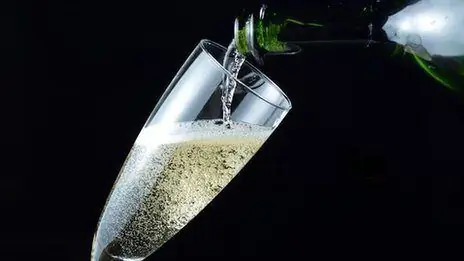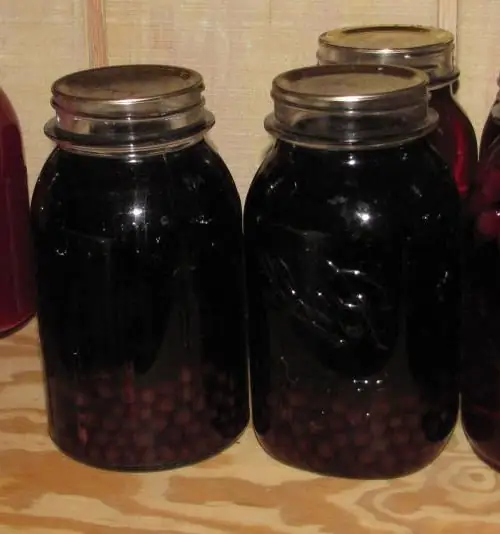2026 Author: Isabella Gilson | [email protected]. Last modified: 2025-01-23 12:50:31
Moselle is a famous wine region. His fame spreads throughout the world. Moselle wines are well known, they are often mentioned in European fiction of the 18th and 19th centuries. And at the moment these alcoholic drinks have a lot of admirers.

Of course, Germany is not the leader in winemaking, and in terms of the number of wine-growing regions, it cannot compete with countries such as France and Italy. There are only thirteen of them, and by the way, the Moselle is not the largest. The leaders are Baden-Wuerttemberg and Reinhessen. Moselle wine accounts for only eight to ten percent.
Features of the region
Moselle vineyards differ not only from other German ones, but also from French and Italian ones. First of all, the fact that they are located not on the plain, but on the mountain slopes. The steepest vineyard in Europe, with a slope of approximately seventy degrees, is located in this region.

Thisthe unique location significantly complicates the life of Moselle winemakers. In order to take care of the vines, they have to climb the mountain every time. But their suffering is fully justified. After all, it is this feature that makes Moselle wines unique.
The rays of the sun, reflected from the waters of the river, fall directly on the vineyards located on the slopes. Thanks to this, the berries receive a double portion of light and heat. And the mountains are excellent protectors from the cold and wind.

Almost always the berries are picked by hand, because even with a strong desire it is impossible to raise the equipment to the slopes.
Main grape varieties
About 24 grape varieties are cultivated in the region, but more than half of the total harvest (60%) comes from Riesling. Mosel is the world leader in the production of wine from this variety.
Müller-Thurgau (Rivaner) is second with 14%. Next comes the Elbling variety, which was popular in the Middle Ages - 6%. Behind him Kerner - 4%. This variety is popular in the Palatinate and Hesse. And in last place are the red varieties Spätburgunder and Dornfelder - 4% and 3.6%, respectively.
French grape varieties such as Chardonnay, Merlot and Sauvignon Blanc are also grown here. But their share is too small. It is worth noting that 91% of the total volume of grapes falls on white varieties.
Features of vine care
Regardless of the grape variety, Moselle wine is made not from the harvest, but from the preparation of the soil in the spring. Each bush is tied to a peg fromtree. Be sure to remove the extra young shoots, otherwise the vine will grow incorrectly and will not acquire a certain shape.

According to experts, you should get rid of excess growth at least 3-4 times a summer. That is, while the winemaker processes his entire plot, he already needs to start getting rid of the growth again. And given that all this has to be done on steep slopes, it becomes clear that this work is not easy.
Grape harvest
The grapes for Moselle wines are harvested from September to December. Such a run is due to differences among varieties and different quality of drinks. Before the start of the process, a big celebration is held in the region in honor of the start of the harvest. Moreover, this is an international event. Anyone can come to the festival. Only now you will have to book a hotel room almost a year before the event.

The bulk of the crop is harvested before frost. But there is a special kind of wine - ice wine. Grapes for him are just harvested after the onset of cold weather, when the air temperature is seven degrees below zero. For this type of wine, the best berries are left. Icewine is prepared only in very fruitful years. There is another special type of wine - this is trokenbierenauslese, which is made from dried berries.
Production Features
As soon as the first grapes are harvested, the preparation of wine begins immediately. The production processes of white and red drinks have certain differences.
Light grapes are sent underpress and get the juice, which then goes through the fermentation process. With red varieties, things are a little more complicated. In order to get a wine of a beautiful red color, not only the juice, but also the skin must participate in the fermentation process. The shade depends on it.
After a certain time, the must is removed from the pulp. Further, both white and red wine are sent to barrels. Since the first one is much larger, then the container for it needs an impressive size. Usually this drink is stored in huge metal vats. But wooden barrels are used to store red.
During the winter, the wine is poured several times, thereby relieving it of sediment. So even in winter, winemakers are constantly at work. In the spring, bottling begins. Some, however, are left to mature for a few more months in oak barrels.
Alsatian bottle
For bottling Moselle wine, you need a specific bottle. In general, there are 12 main types of wine bottles. This is without taking into account the ones that manufacturers come up with to increase sales.
The Moselle or Alsatian bottle is particularly elegant. It is a tall, "slender" container with a long neck and usually a flat bottom. Most often, these bottles are made of light green glass.

German winemakers often use such containers for bottling Riesling, Müller Thurgau and several other varieties. The type of wine doesn't matter. There can be dry, and semi-sweet, and sweet, and sometimes even sparkling. But in the countries of the New World in such a bottleonly dessert wines are bottled. By the way, it is also called the Alsatian flute for its shape.
Features of Moselle wines
Almost every restaurant's wine list contains drinks from the Moselle, as they are very popular all over the world. Their main distinguishing feature is a fragrant bouquet with nutmeg tones or notes of elderflower.

Four rivers pass through this wine region: Moselle, Ara, Nahe and Rhine. That is why white wine from the Moselle is most often compared with other Rhine drinks. Against their background, Mosel ones stand out with an incredibly bright aroma.
There is a little secret: this effect is mainly achieved artificially. Special additives are added during the manufacturing process. After such a procedure, the wine has a bright nutmeg aroma, thanks to which no real connoisseur will confuse it with another. Moselle wines have an unusual color. They are completely transparent and very light. They are also distinguished by a pleasant astringency in taste.
Wine from the Moselle will perfectly complement first courses or fish dishes. Most often, their strength does not exceed nine degrees, so they are an excellent tonic.
Shelf life
Many will attribute this feature of Moselle wines to disadvantages - they have a short shelf life. These drinks do not get better with time, like many other wines, and the reason for this is residual sugar. It appears due to the peculiarities of production, or rather, due to the artificial interruption of the fermentation process. Asbiochemical processes can occur even with a closed cork, Moselle wines should be stored in a cool place and only in a lying position. And yet they won't last long. And an open bottle should not be stored even in the refrigerator.
Riesling names

This wine has not only excellent taste, but also various names that remind of very interesting places. The fact is that Moselle Riesling wines are always assigned additional personal names.
The drink originating from the terraced vineyards is called "Erden Stairs". But the classic Riesling was given the name "Sundial". The name comes from the ancient sundial, which is carved directly into the rock. One of the highest quality traditional Rieslings is called Leuvener Monastery Garden.
From the glorious town of Trittenheim came out two types of this wine. One of them is the spatlese category and is called the Trittenheim Altar. Its strength is 10 degrees. But the second sweet drink with a strength of 19 degrees is called the Trittenheim Pharmacy.
The wine with the name Rosenberg (red hill) has its own amazing story. In 1890, most of the legendary vineyard became the property of Nackenheim banker Karl Gunderloch. At the moment, Nackenheim Rosenberg is the world's most famous brand.
Also, Black Cat wine, which is also made from Riesling grapes, is famous all over the world. You can’t confuse it with anything because of the juicyearthy taste.
You can talk about Moselle wine for hours. But no words can compare with a sip of the divine drink. Therefore, one should not speak, but try.
Recommended:
Processing and preparation of grape snails. Cooking grape snails at home

Cooking snails doesn't take much time. But if you have never made such a dish on your own, then you will have to try hard to make a really delicious and nutritious lunch
Categories of wines. How are wines categorized? Classification of wines by quality categories

As they said in ancient Rome, In vino veritas, and it is impossible not to agree with this. After all, despite technological progress and the cultivation of new varieties of grapes, wine remains one of the most honest drinks. People can fake a well-known brand, but you can't fake the taste, smell and color. And how, 1000 years ago, high-quality wine can loosen the tongue of even the most laconic person
Grape snail recipe. Dishes from grape snail

What is the Grape Snail dish? The recipe for preparing such a dinner will be presented in the materials of this article
Delicious grape compote for the winter without sterilization. Grape compote for the winter: a simple recipe

Usually cooking compotes takes a lot of time. It is necessary to sort out everything, rinse, cook, and after that also subject the product to additional heat treatment. But there are many options that allow you to make, for example, grape compote for the winter without sterilization. The finished product does not lose its taste at all
Grape juice in a juicer. Making grape juice: recipe

Grapes are a very useful product that has simply unique healing properties. It is worth noting that the available varieties of it have a completely different composition, and therefore affect the body in different ways

